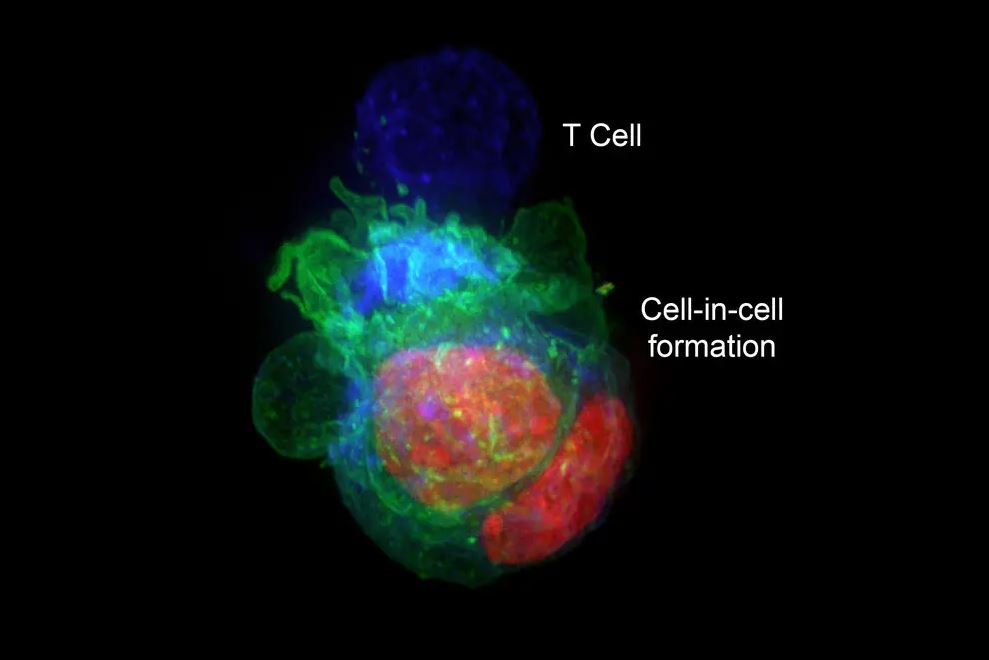Researchers were taken aback when they observed that cancer cells from some forms of cancer were able to avoid being destroyed by the immune system by concealing themselves inside of other cancer cells.
In a paper that was published in this month’s issue of the journal eLife, the researchers stated that the discovery may explain why certain tumours might be resistant to therapies that should have eradicated them.
Yaron Carmi, an assistant professor at Tel Aviv University, and Amit Gutwillig, who was studying for his doctorate in his lab at the time, got the ball rolling on this research by investigating which T cells of the immune system would be the most effective in eliminating cancerous cells. They began with laboratory tests in which they investigated treatment-resistant forms of melanoma and breast cancer in mice. Specifically, they investigated the question of why an assault by T cells that were programmed to eliminate the tumours in question would not eradicate the cancerous growths.
They were specifically interested in checkpoint inhibitors, which are a kind of cancer treatment. They are used to treat a wide range of malignancies, including melanoma, colon cancer, and lung cancer, and include the removal of proteins that would normally prevent T cells from attacking tumours. However, there are cases in which a tumour makes a comeback after it seems to have been destroyed by T cells.
It was discovered that the gigantic cells were really cancer cells that were harbouring other cancer cells and preventing them from being destroyed. Even if the immune system was successful in eliminating the cancer cells that were acting as cellular bunkers, T cells were unable to access the cancer cells after they had evaded detection and fled to their hiding spots.
He examined human cells from from breast tumours, colon cancers, and melanomas, and found that all of them had the same pattern. However, malignancies of the blood and glioblastomas, which are the most lethal kind of brain cancer, did not produce cell-in-cell structures.
Dr. Carmi reasoned that it was conceivable to prevent cancer cells from seeking sanctuary if there was a way to do so. He made the decision to look into the genes that were responsible for this protective mechanism. It was revealed by him that inhibiting the activity of those genes also prevented the T cells from being able to assault the tumours.
According to Dr. Marcela Maus, who directs the cellular immunotherapy programme at the Massachusetts General Cancer Center, the study revealed what may be a novel defensive mechanism for cancer cells.
According to what he mentioned, one of the potential treatments would be to destroy the cancer cells by administering immunotherapy to a patient for a little period of time, pausing treatment for some time, and then administering it once again. This may be in line with recent doubts that have been raised over the appropriate length of time for patients to be treated with these risky and costly medications.
Even while the finding is “a truly creative observation,” as Dr. Wolchok put it, it is too early to tell whether or not it will result in advancements in the treatment of cancer patients.

